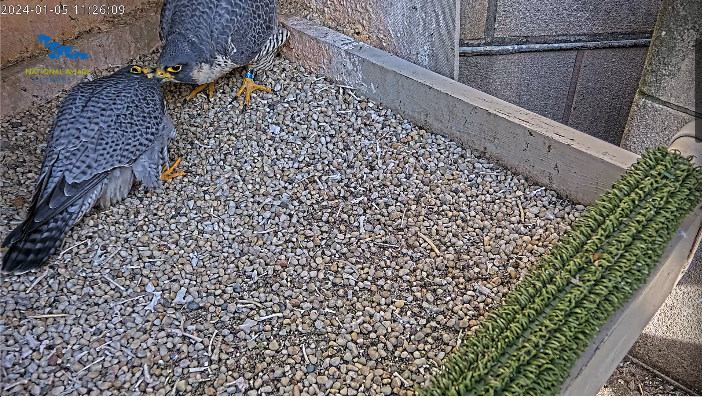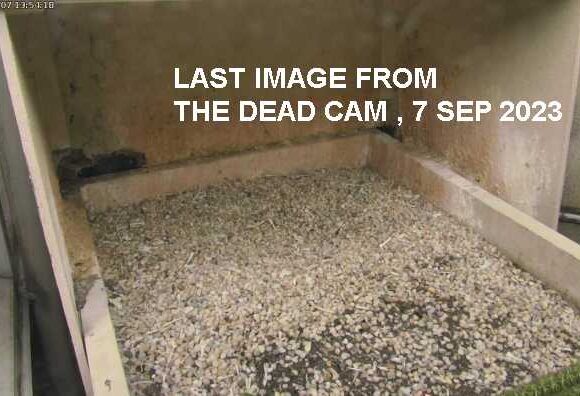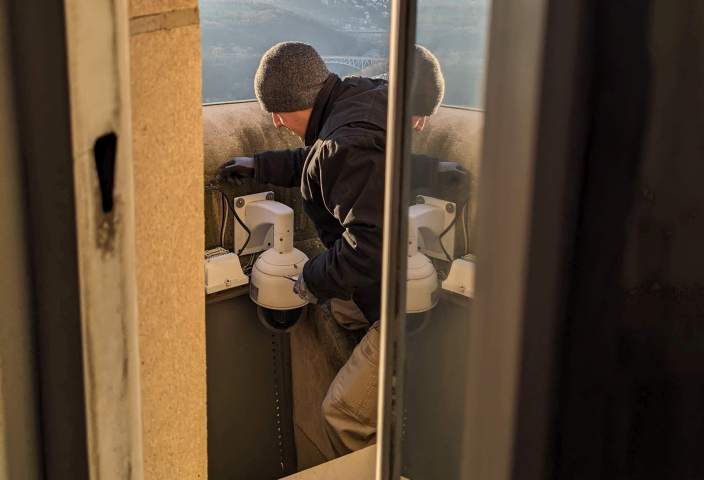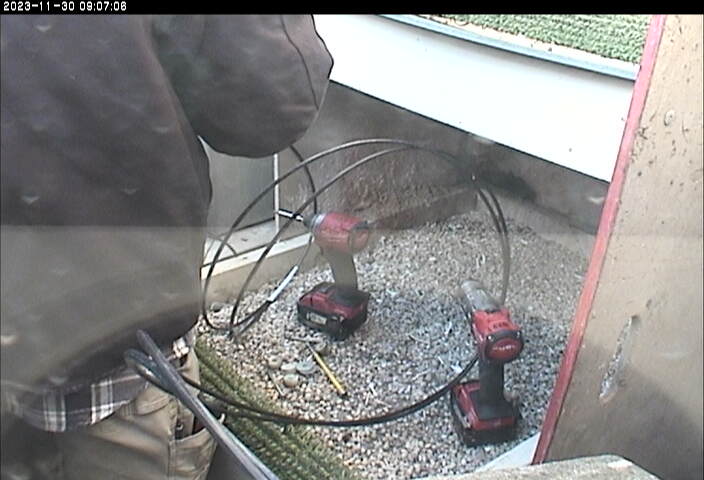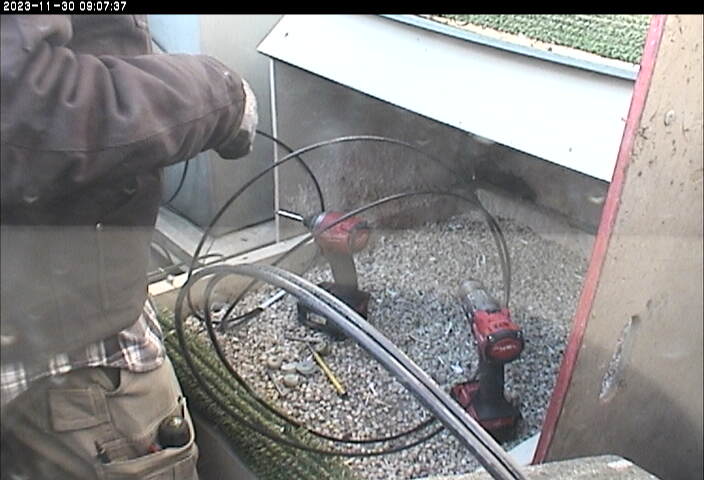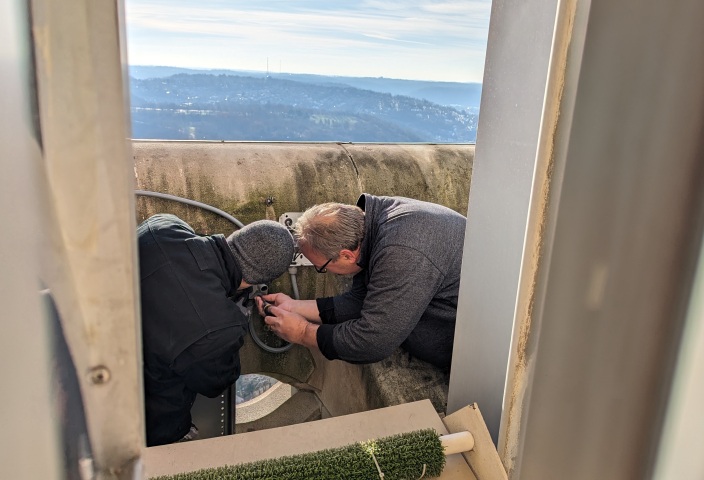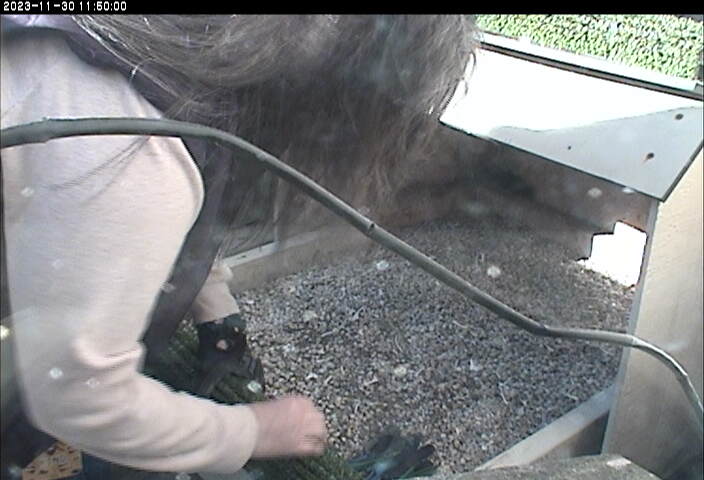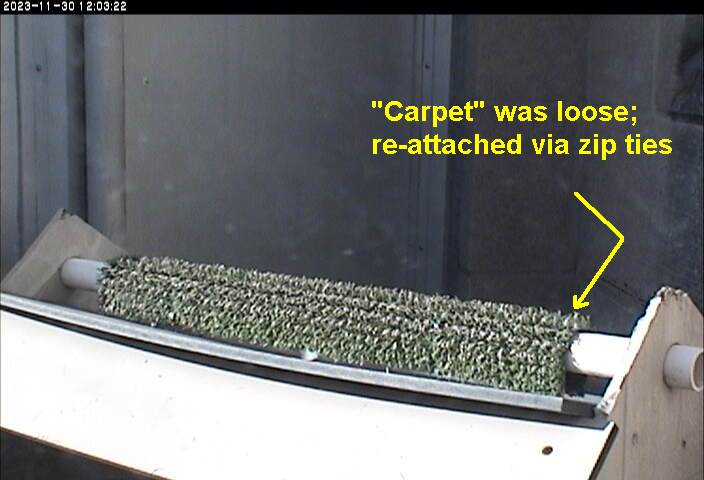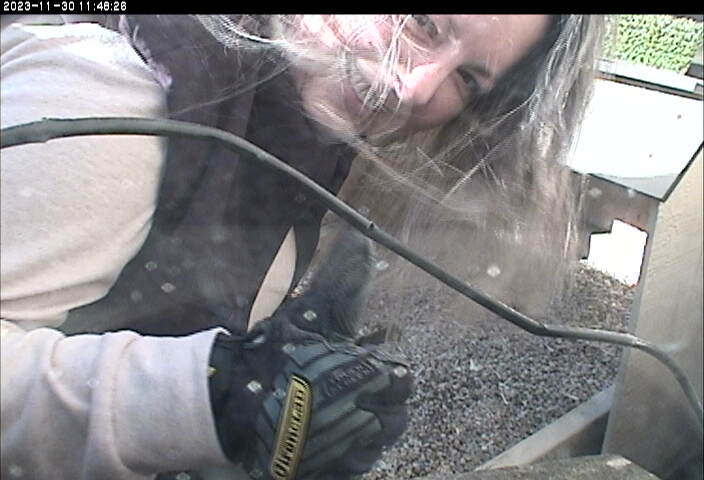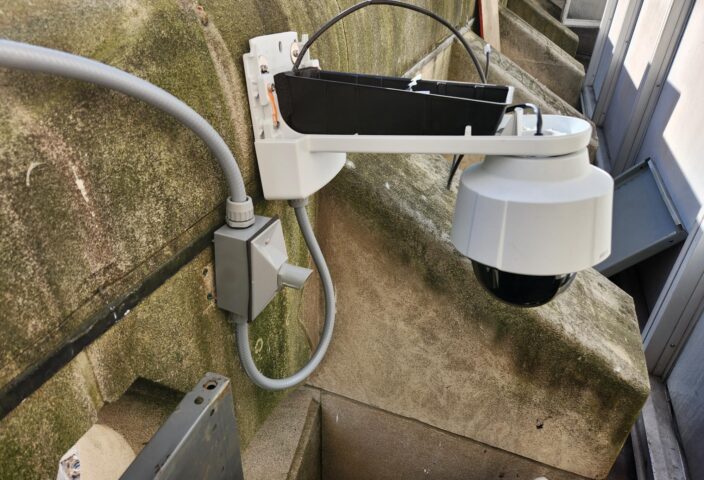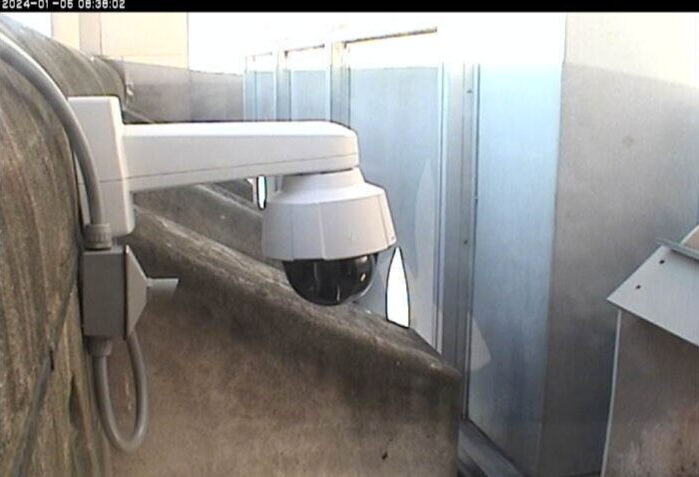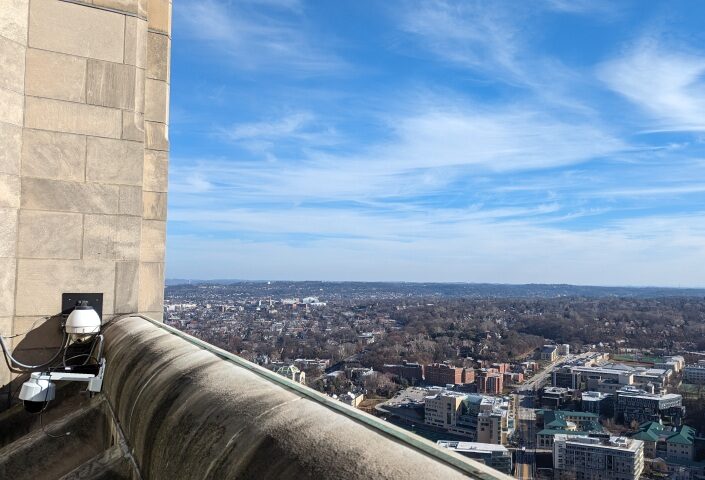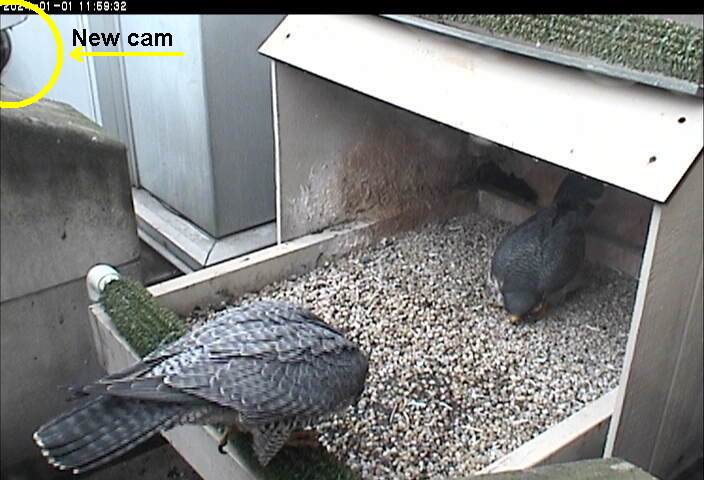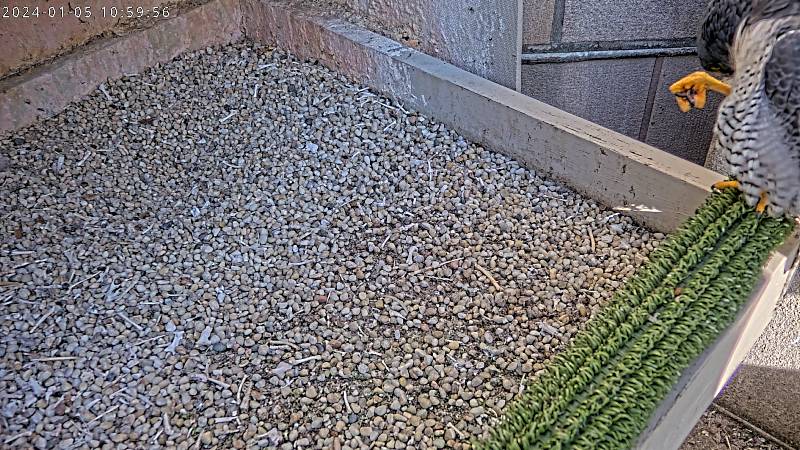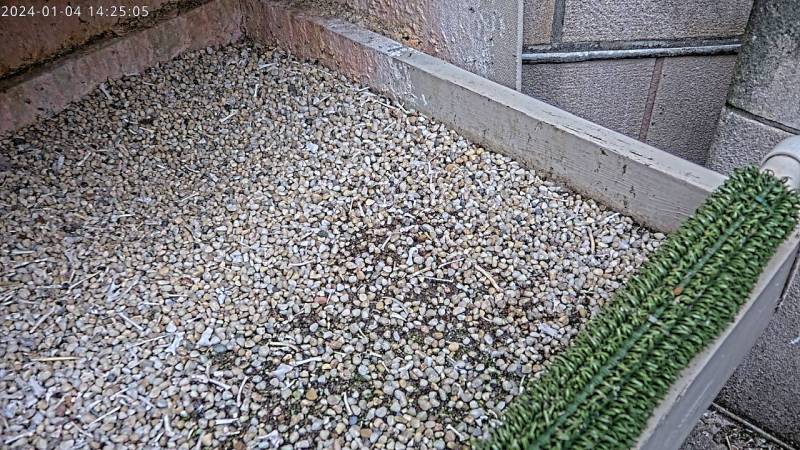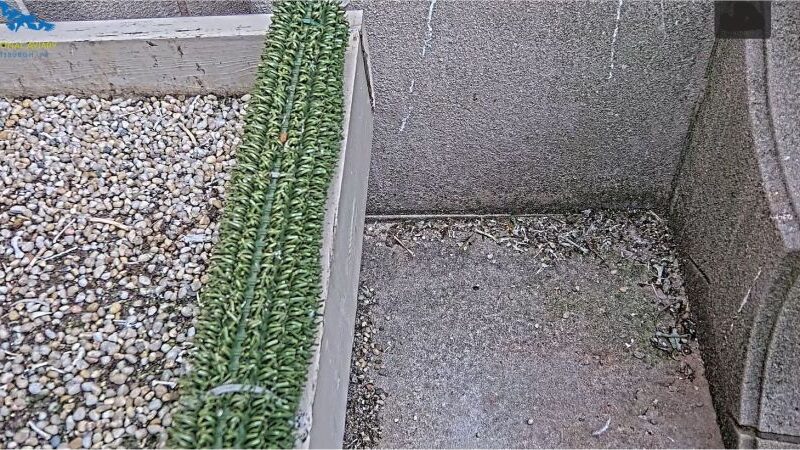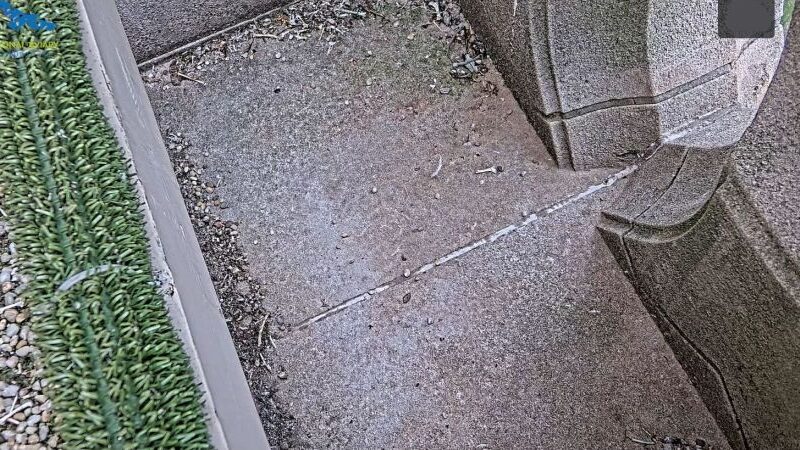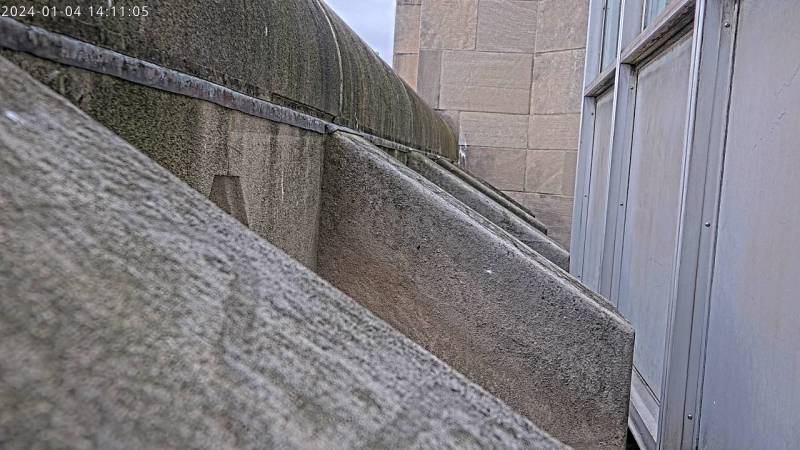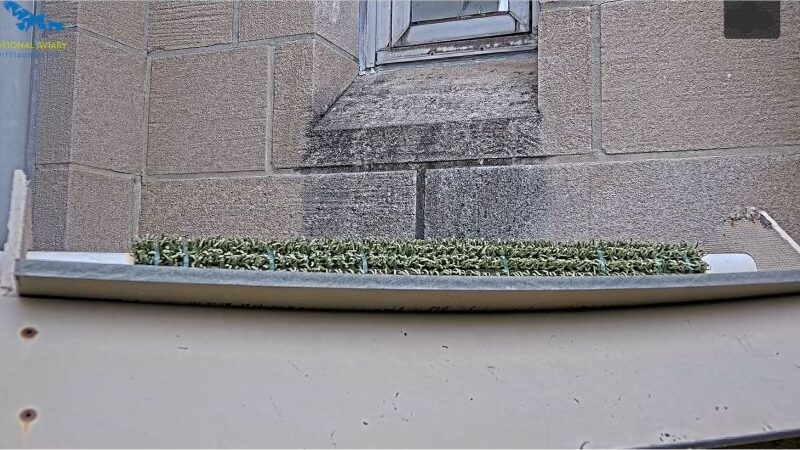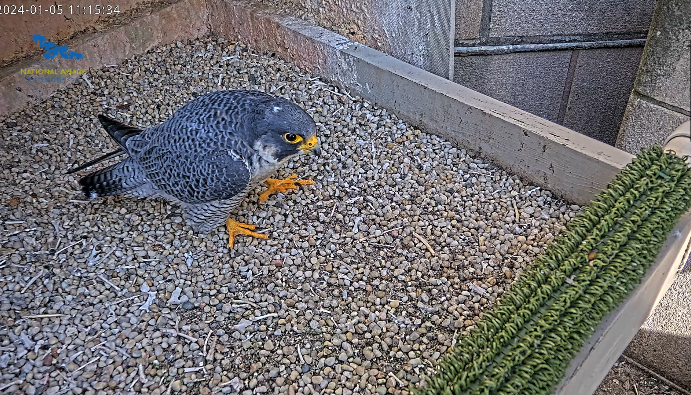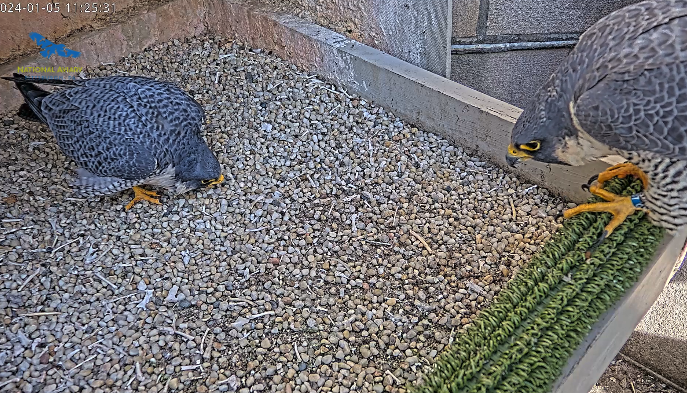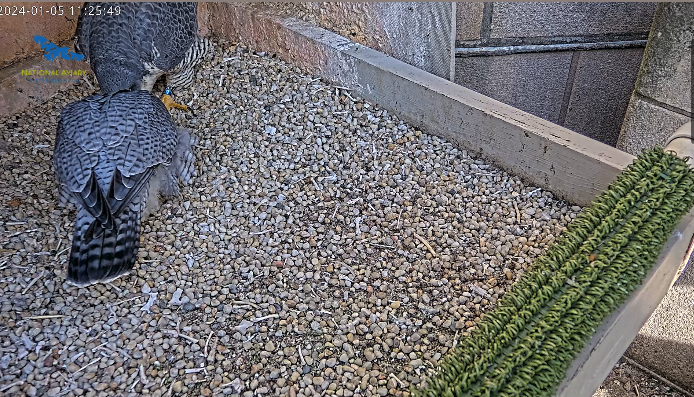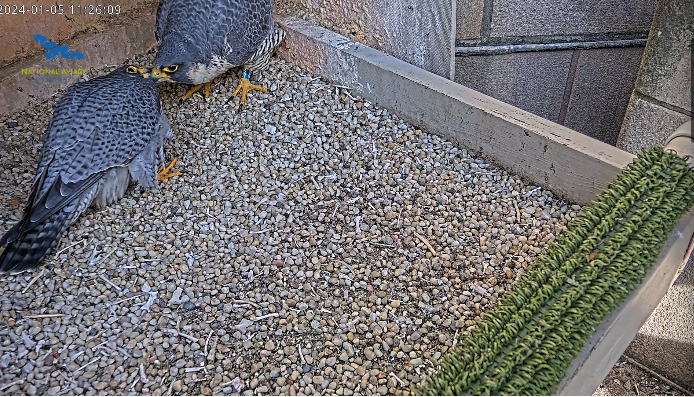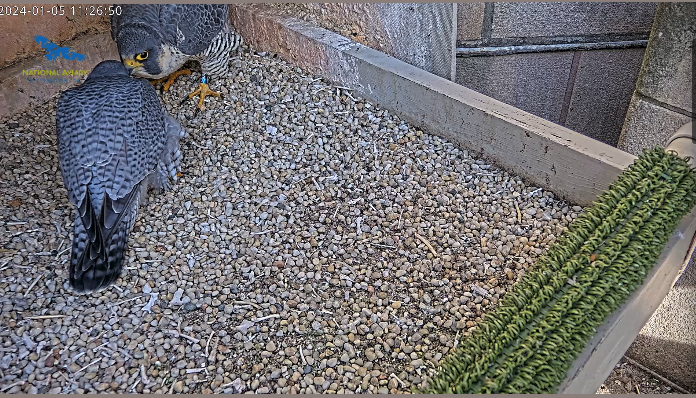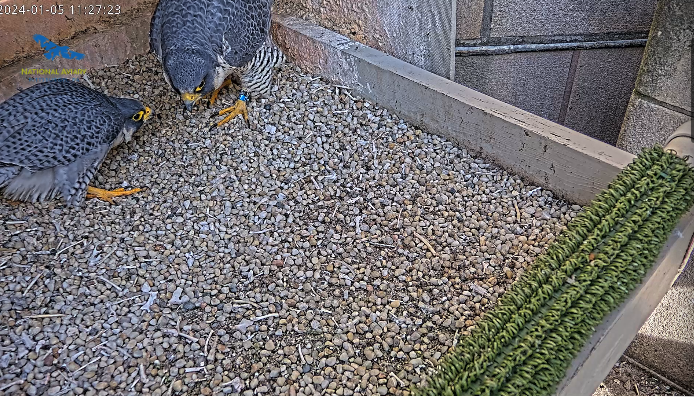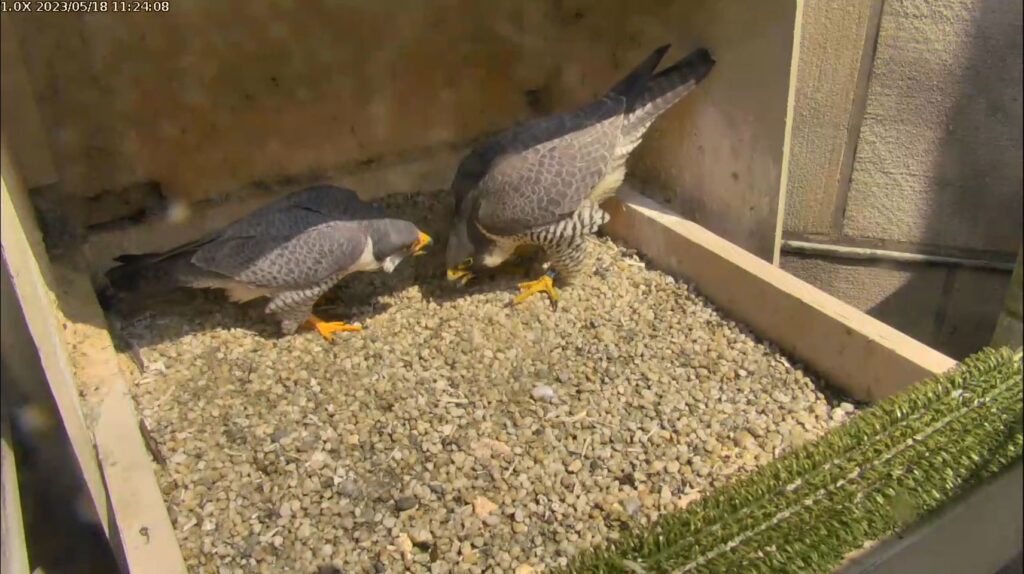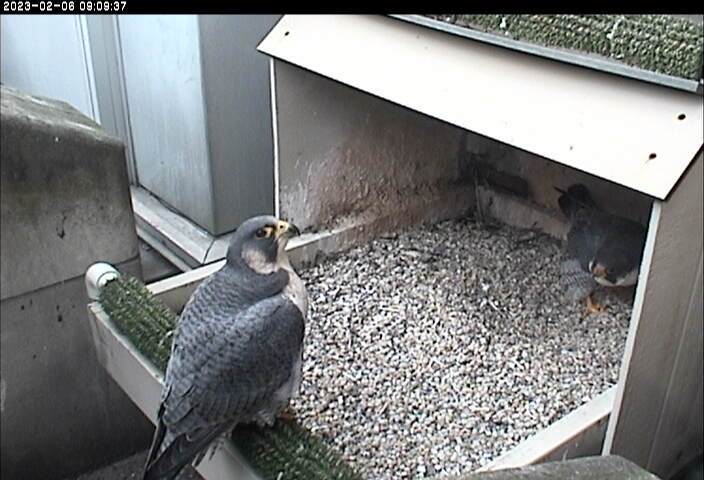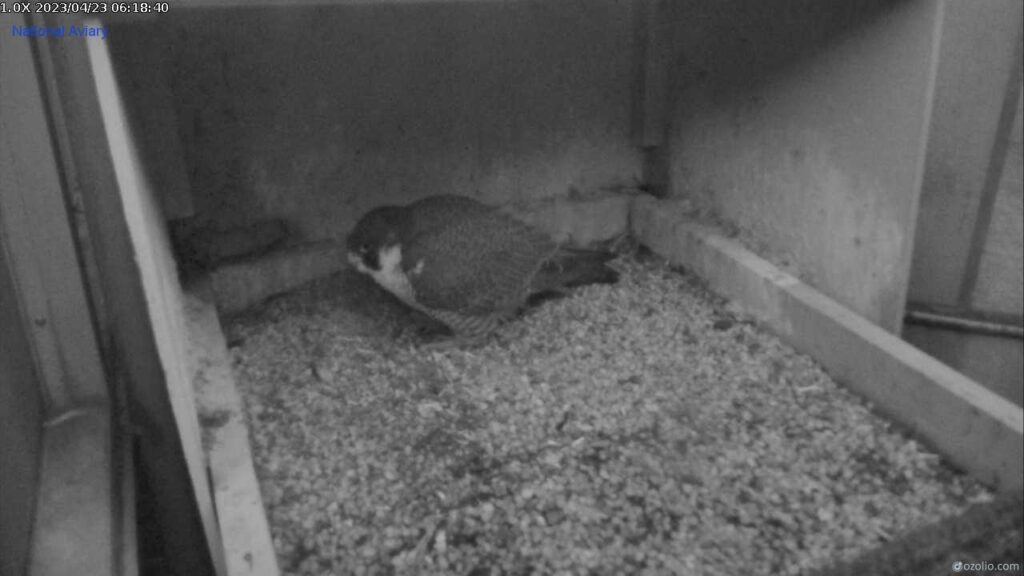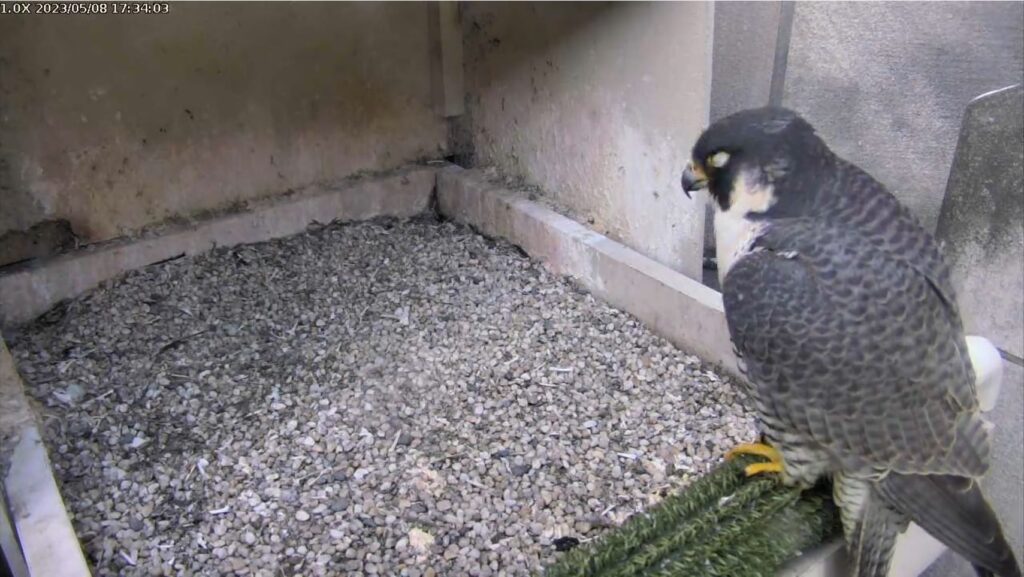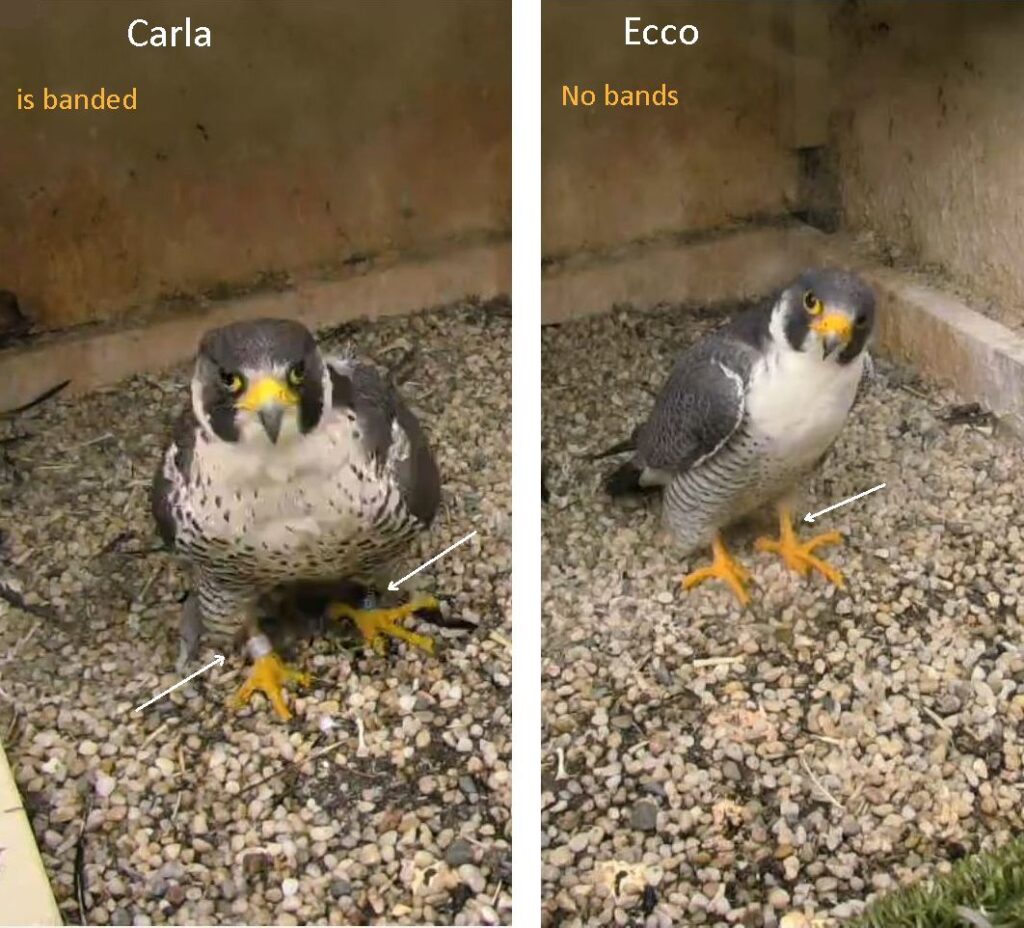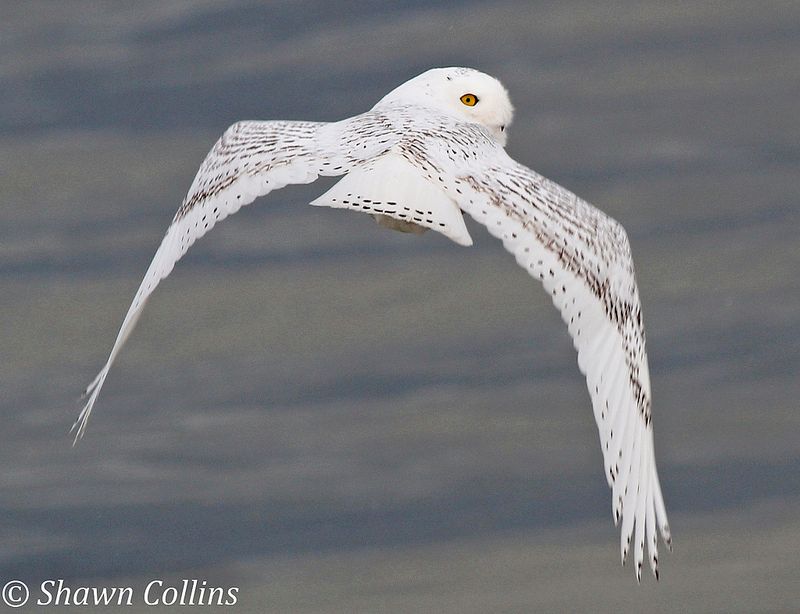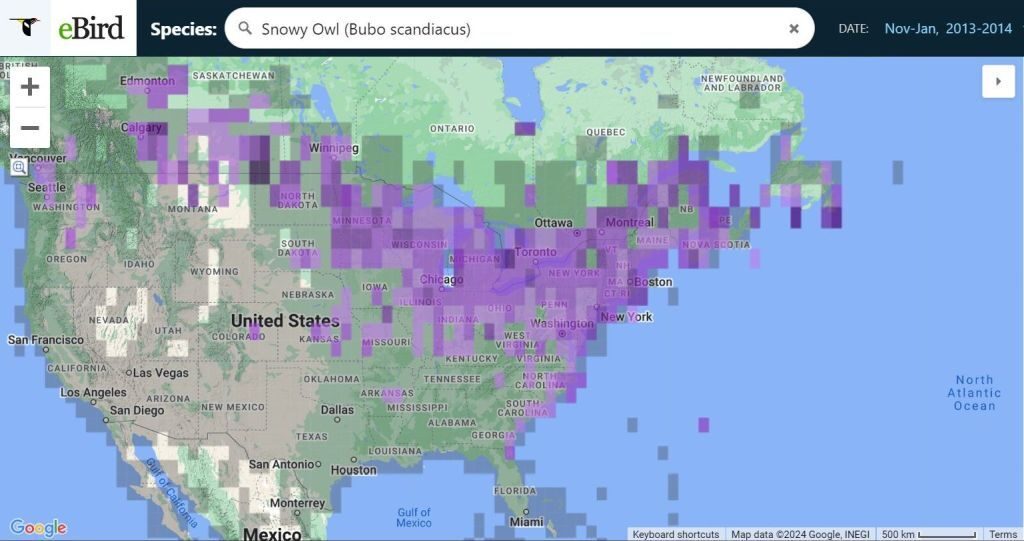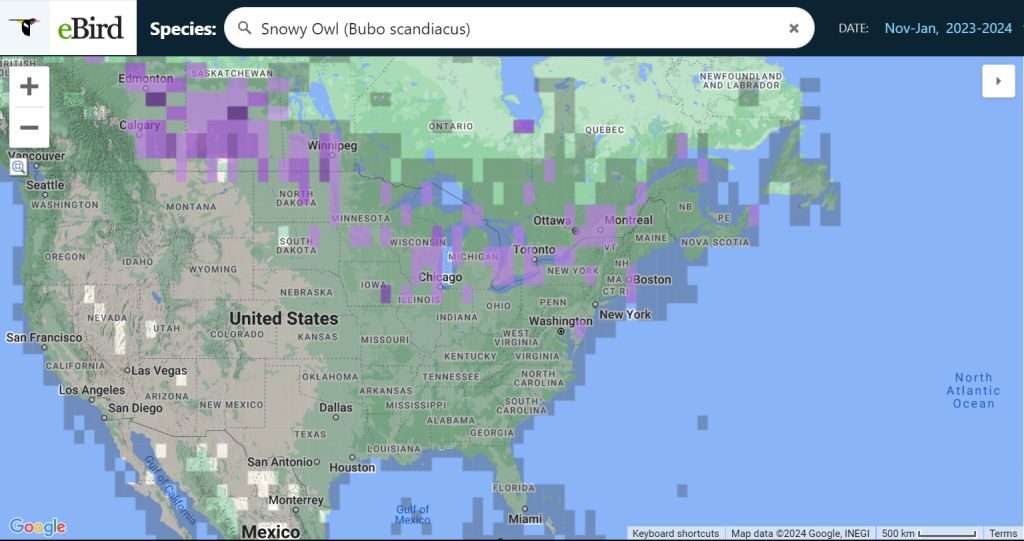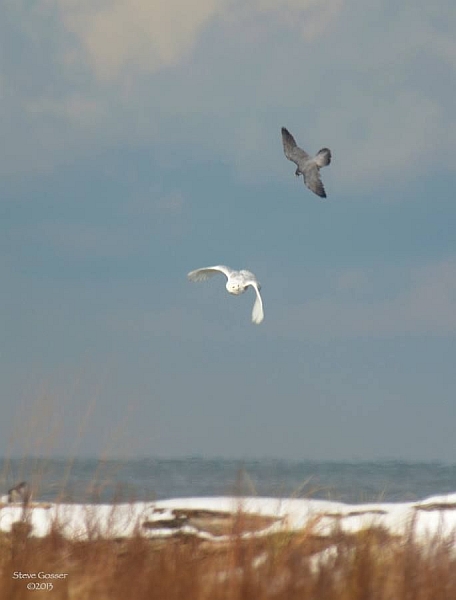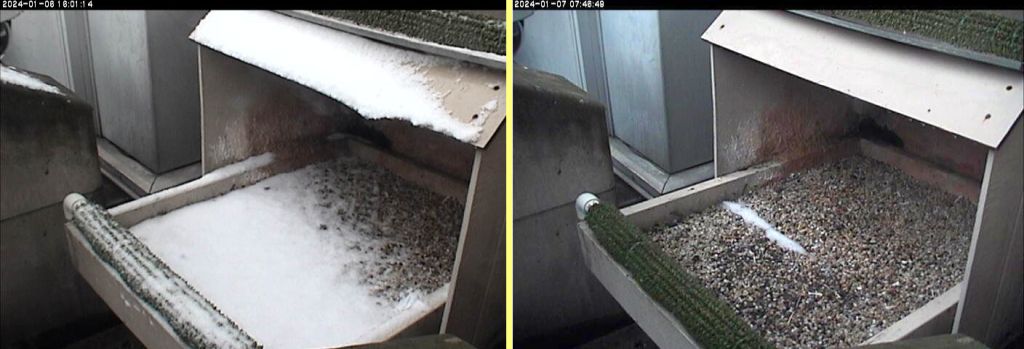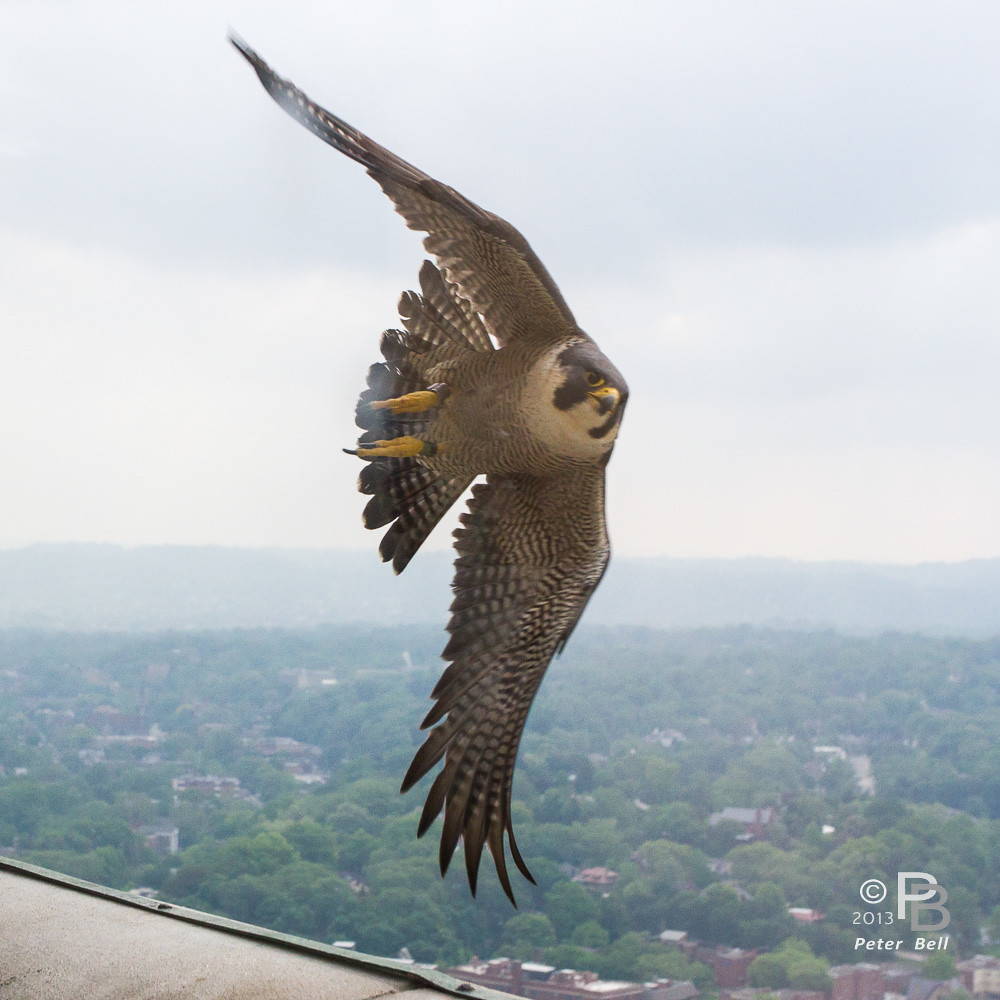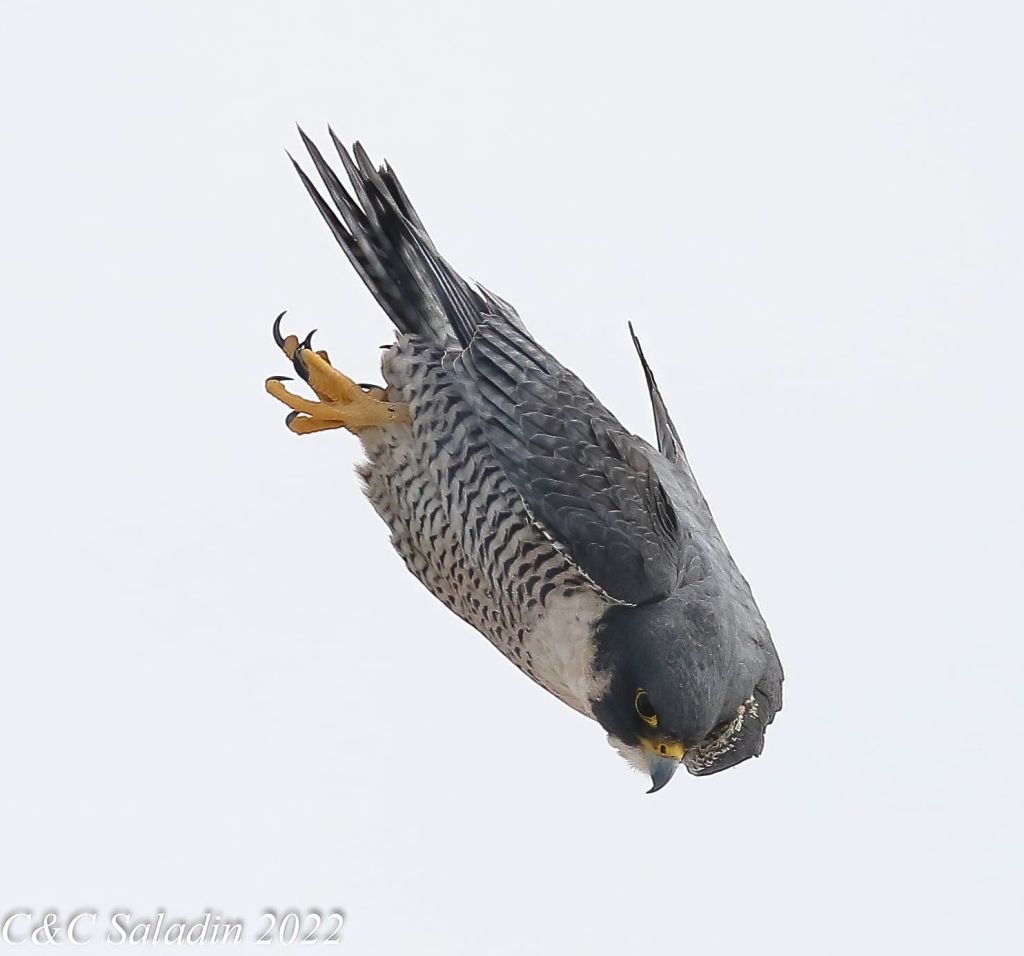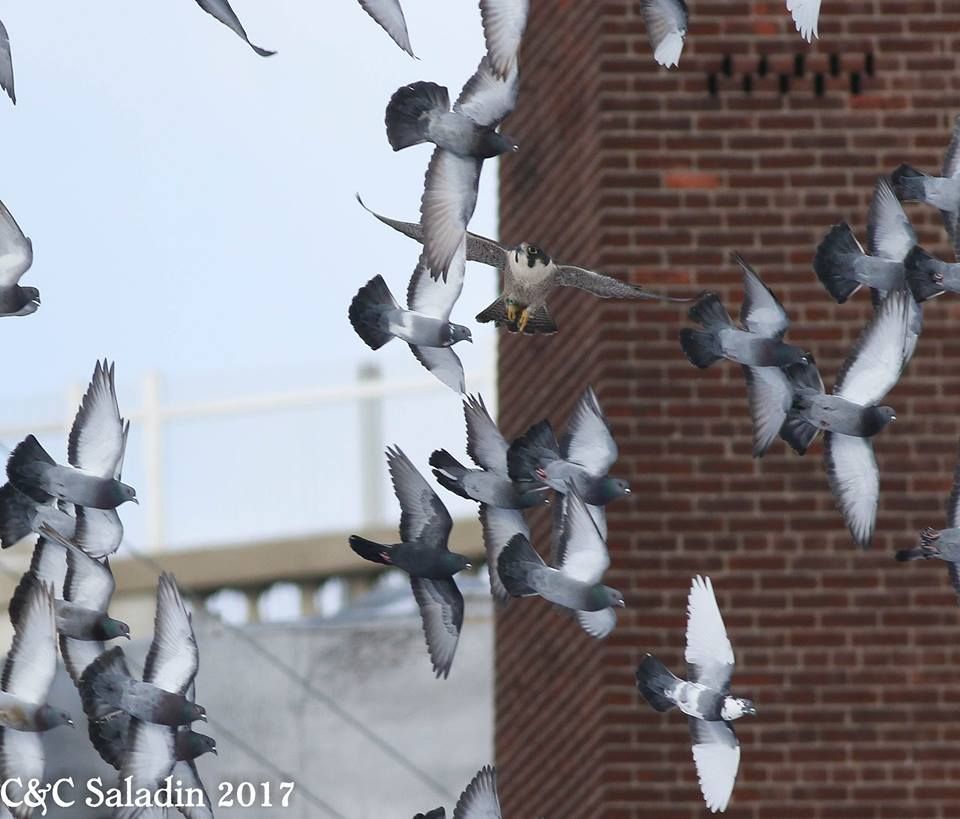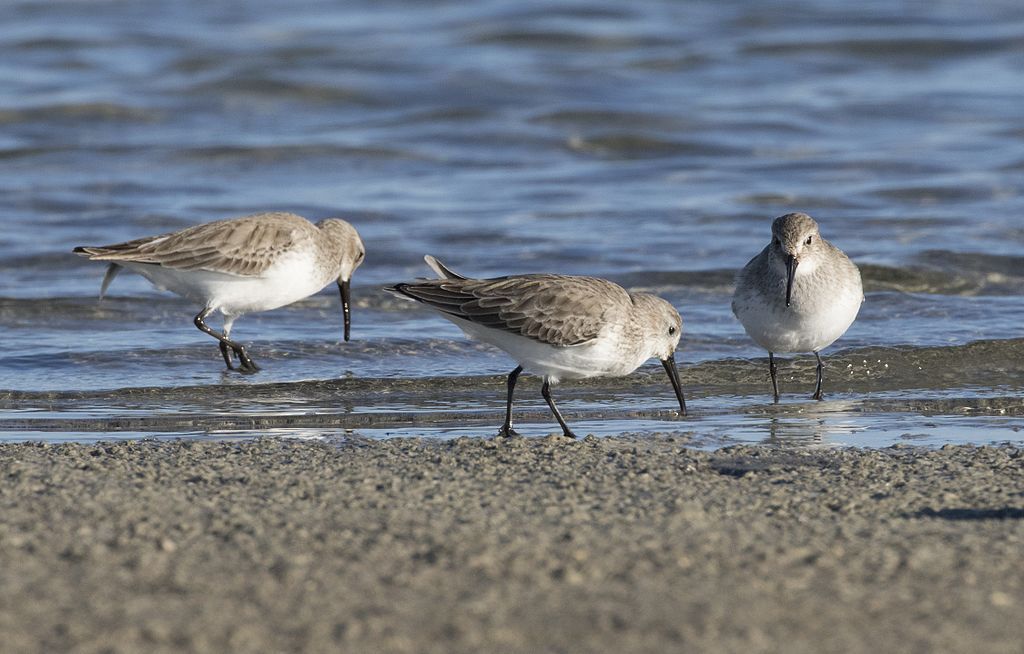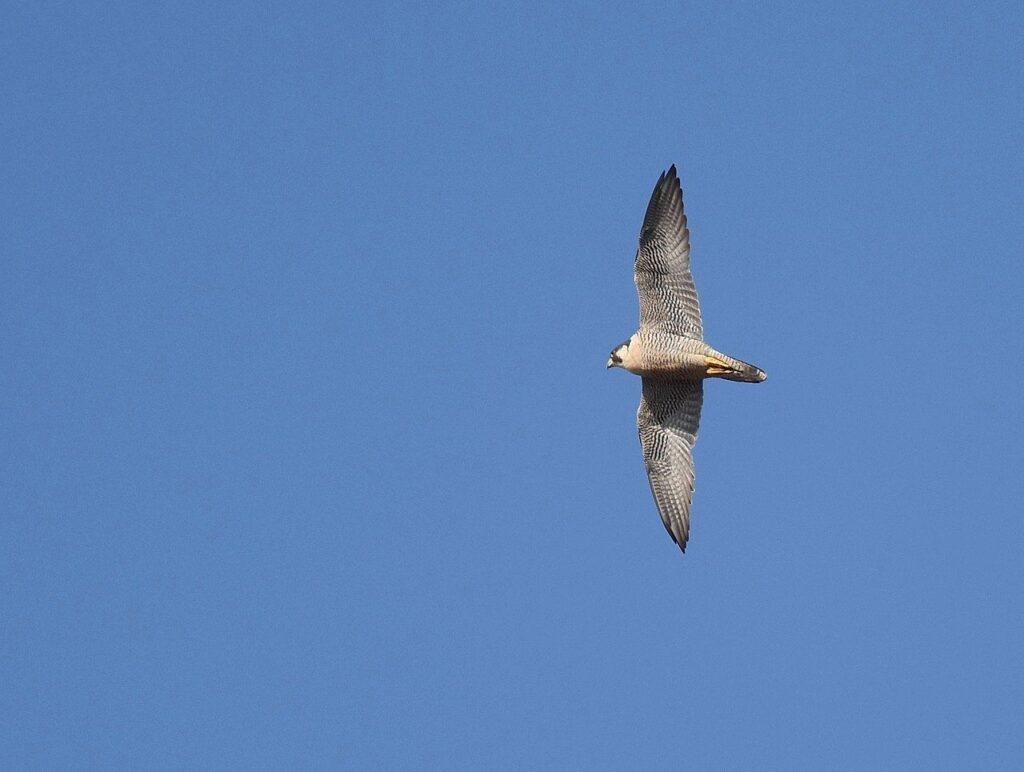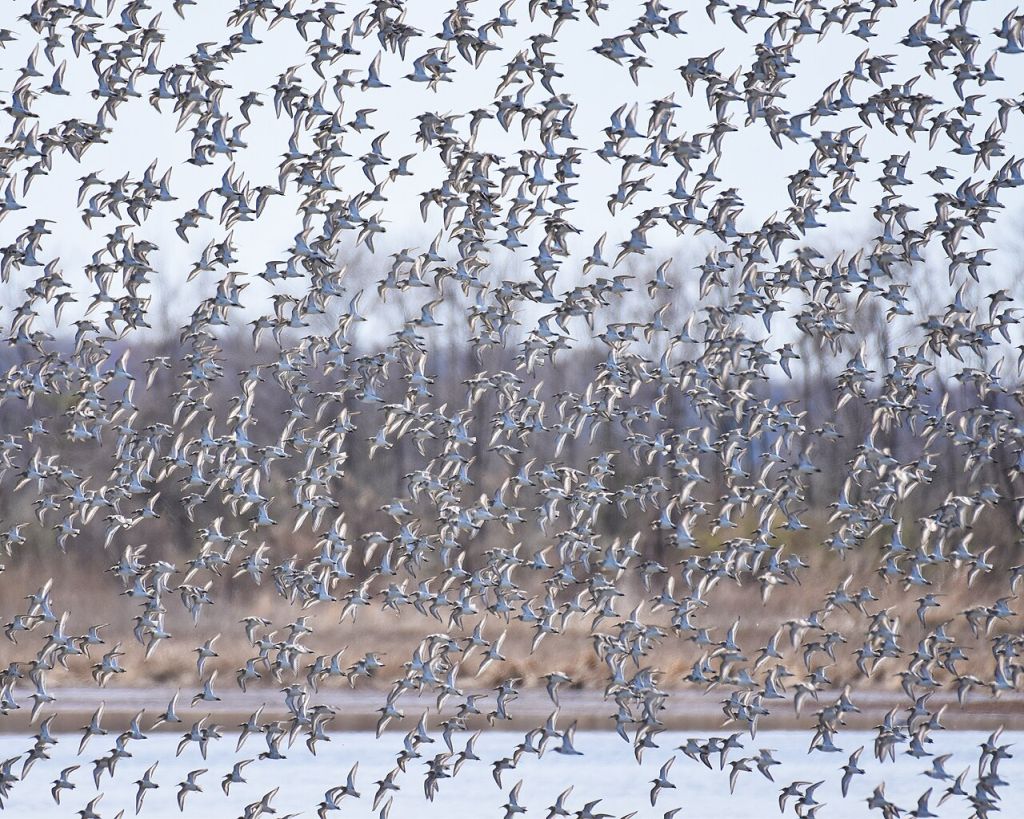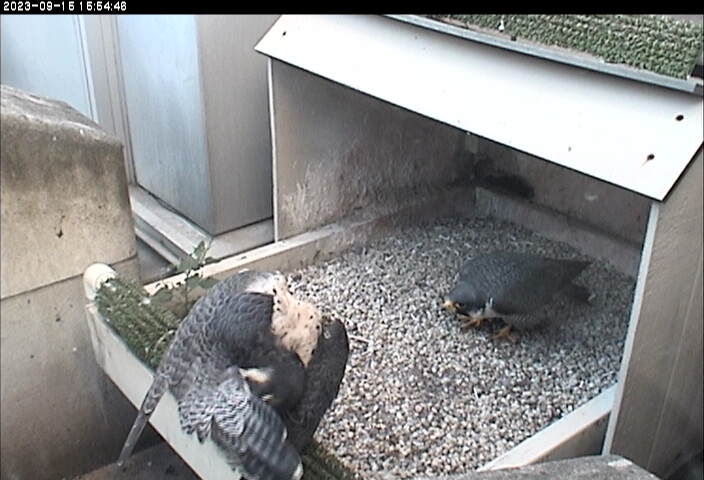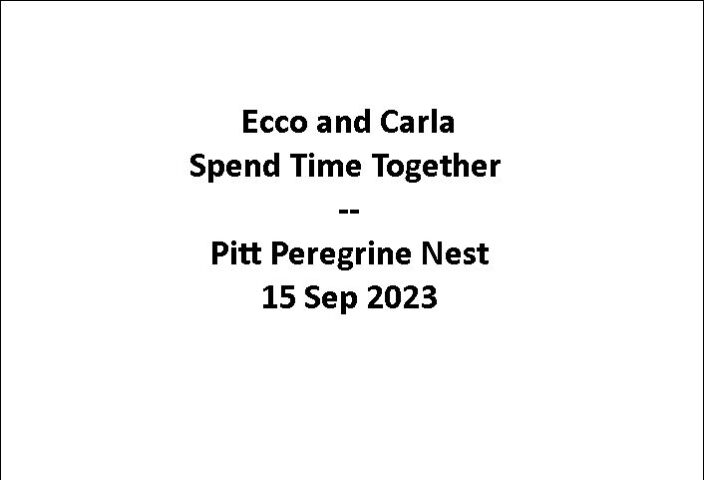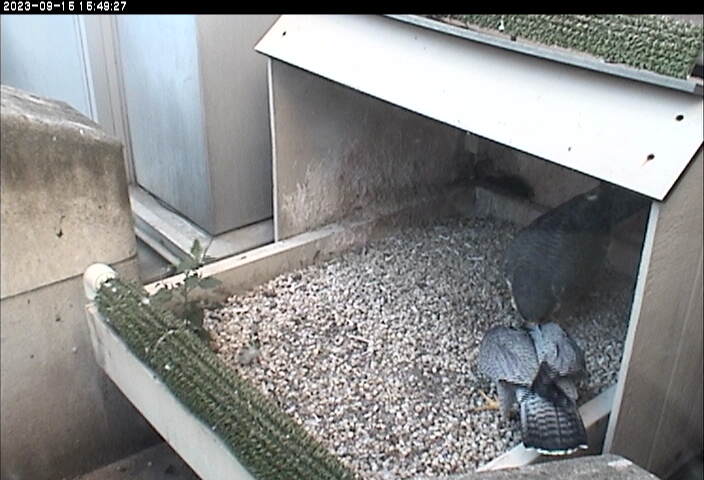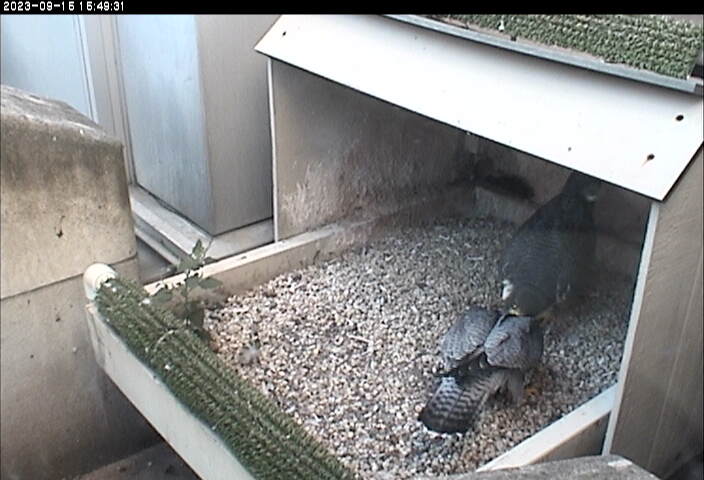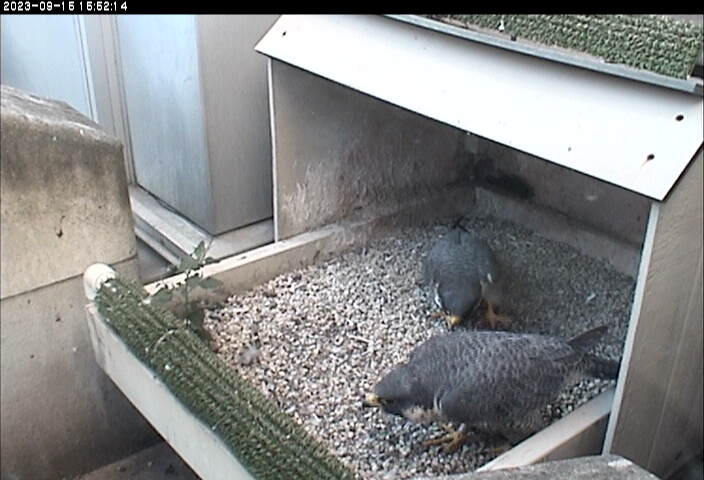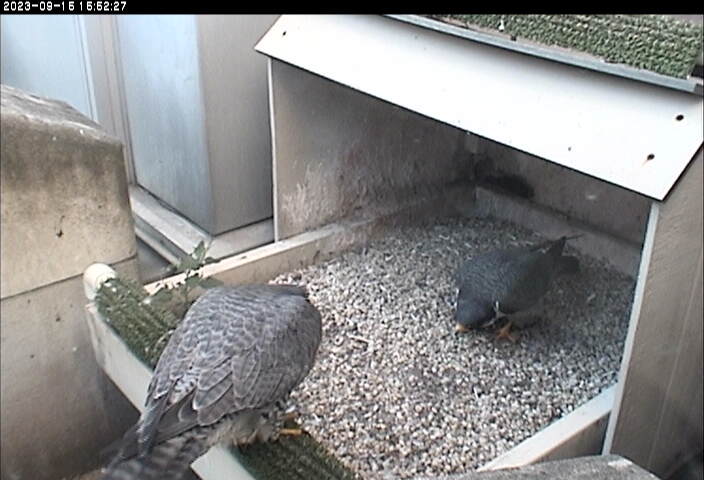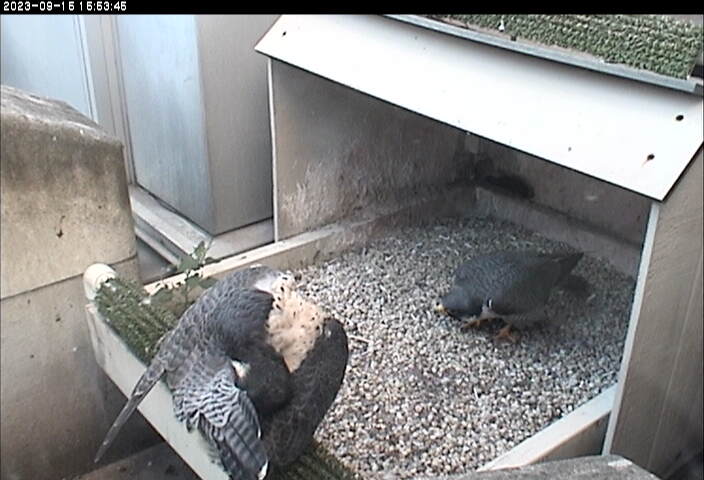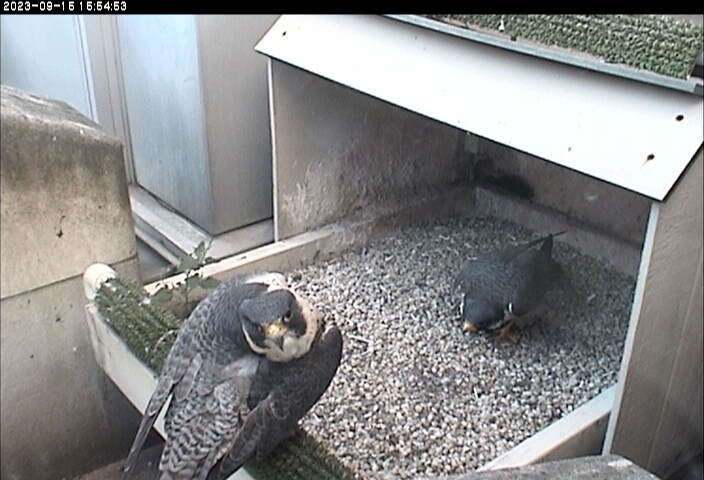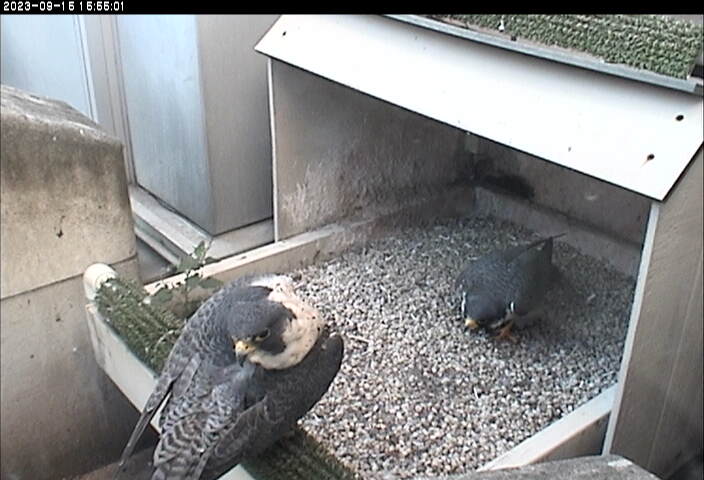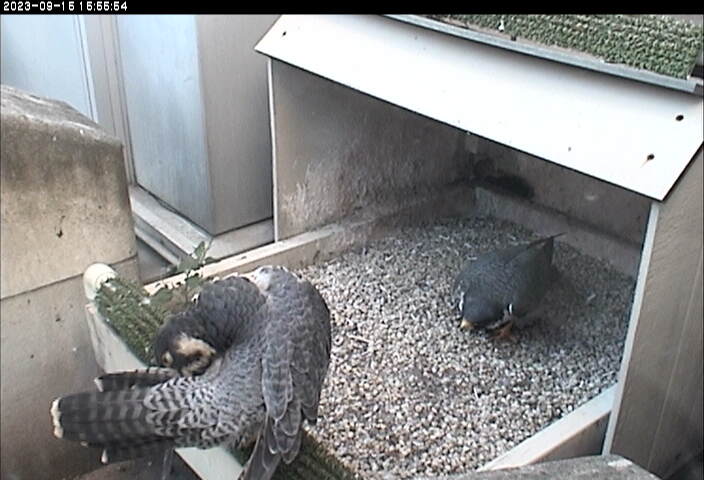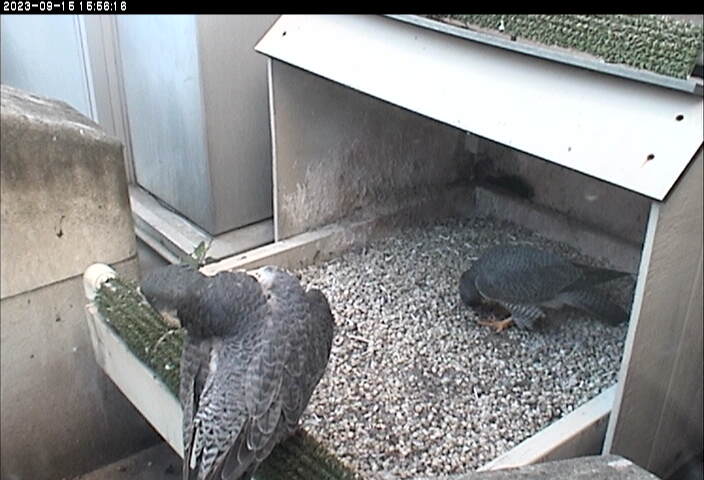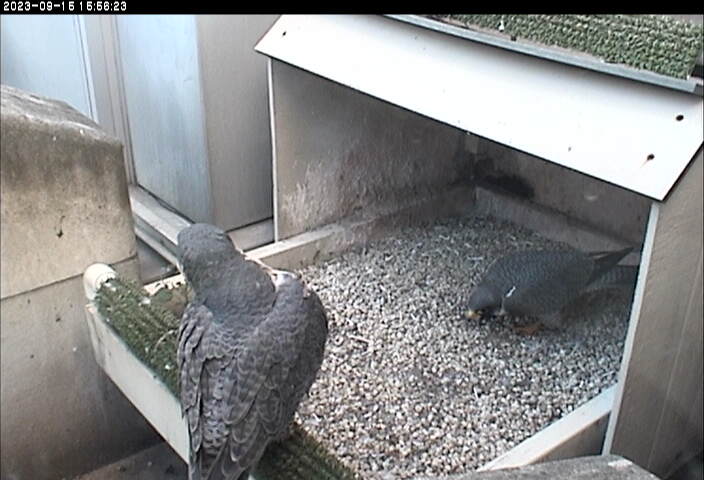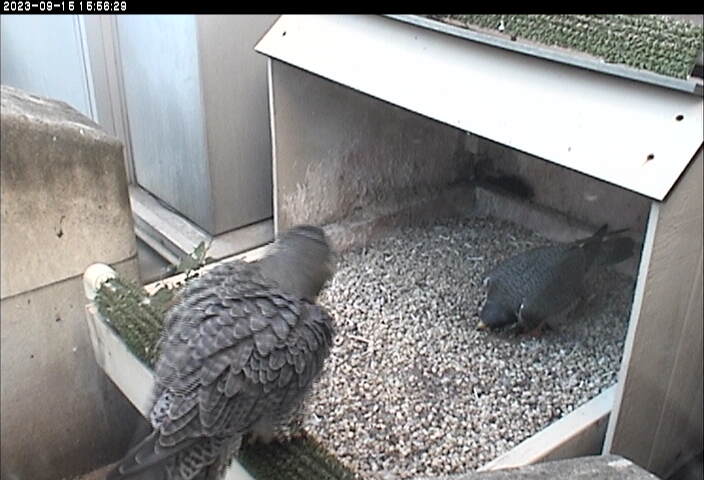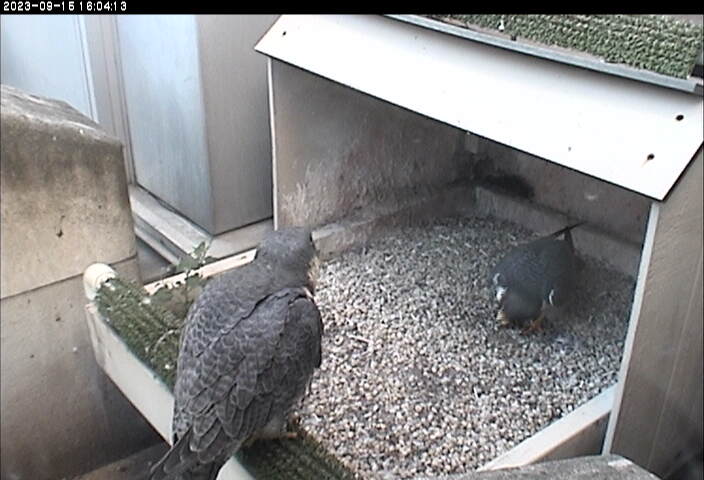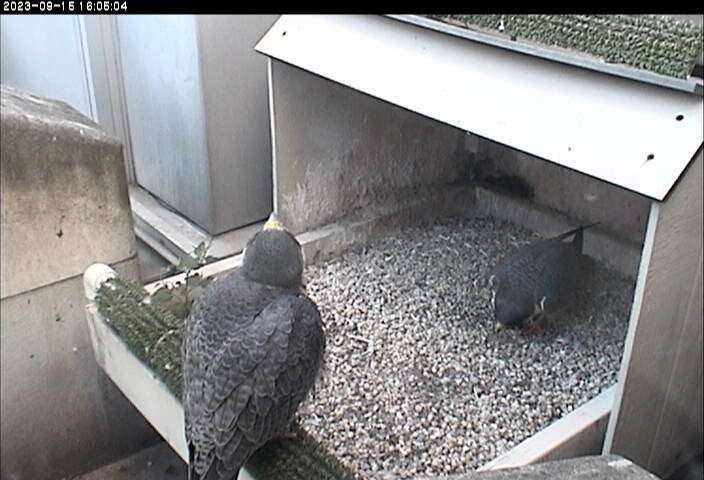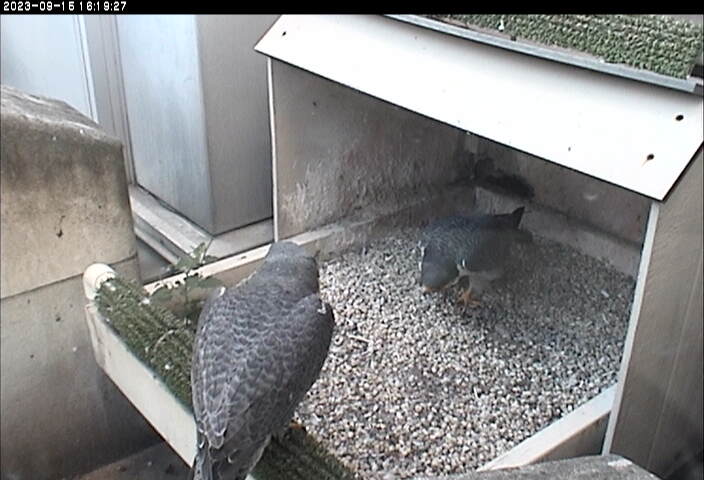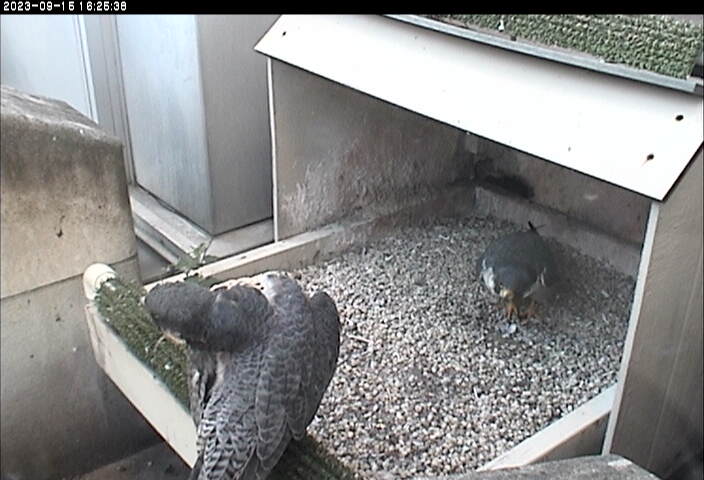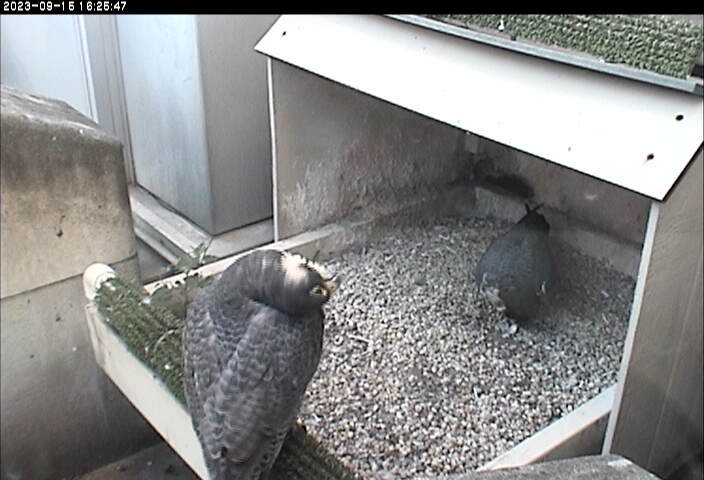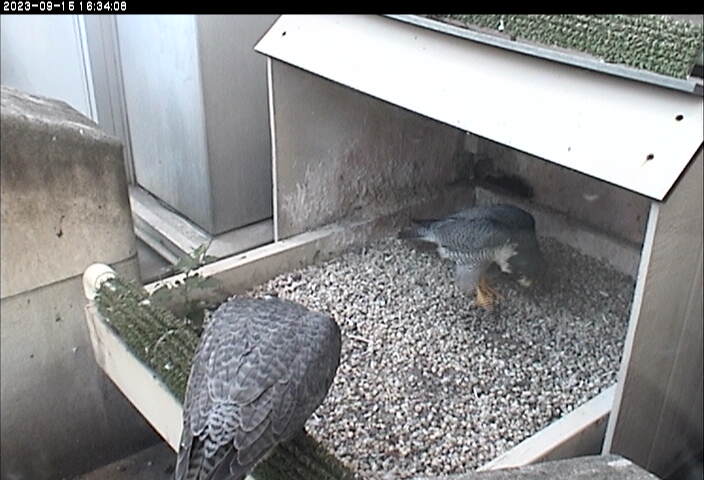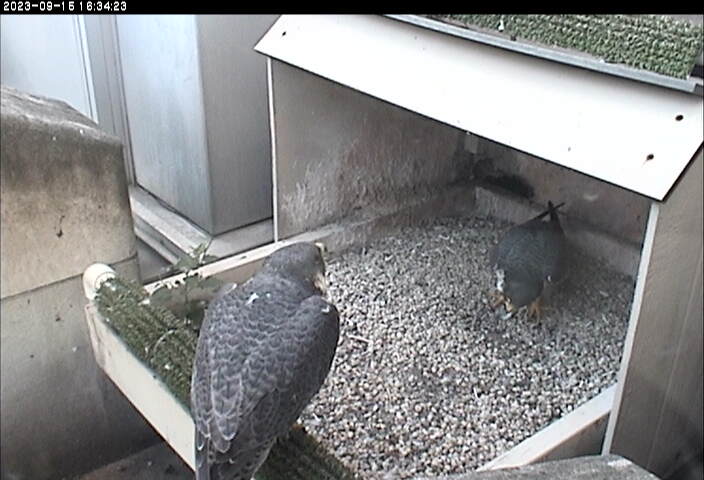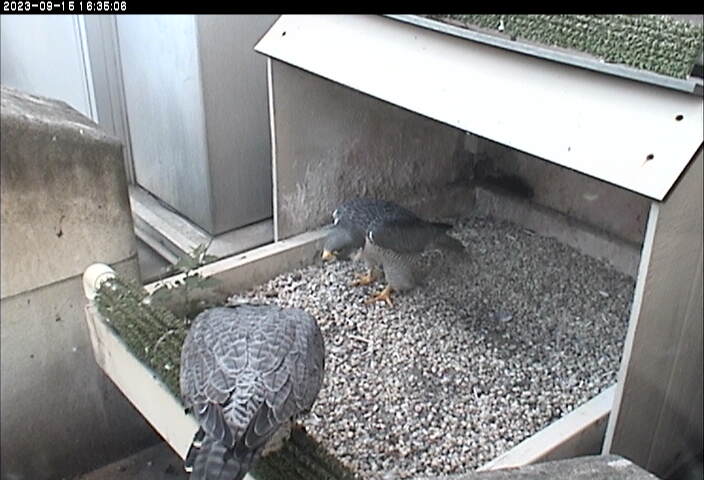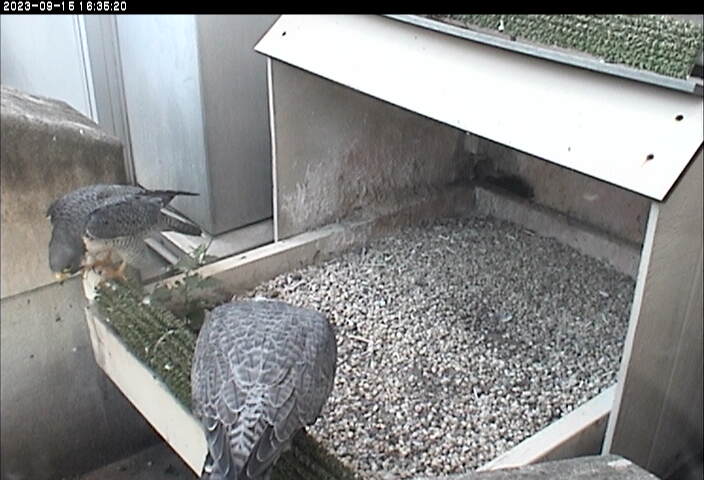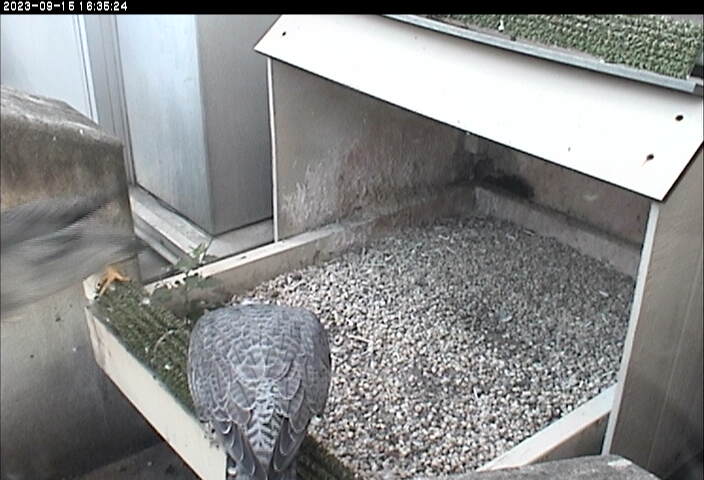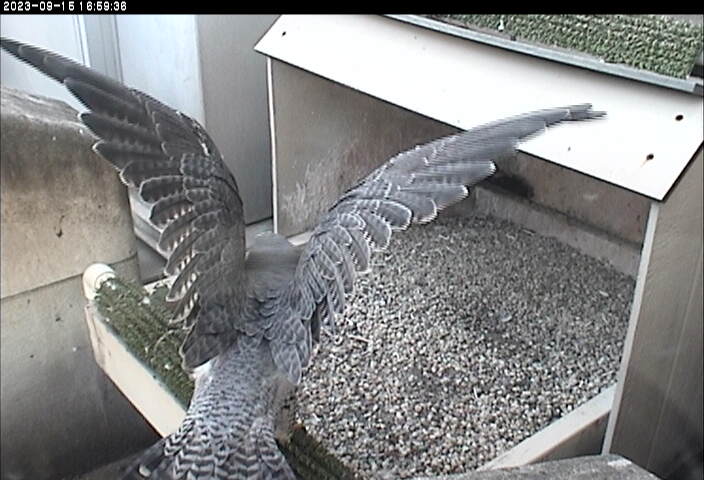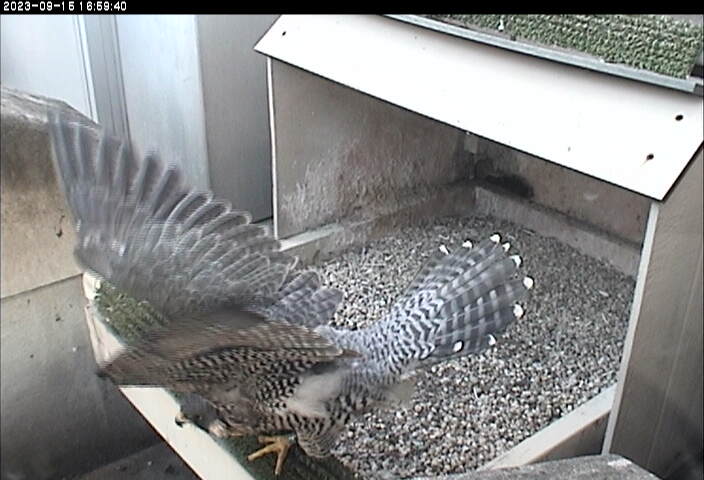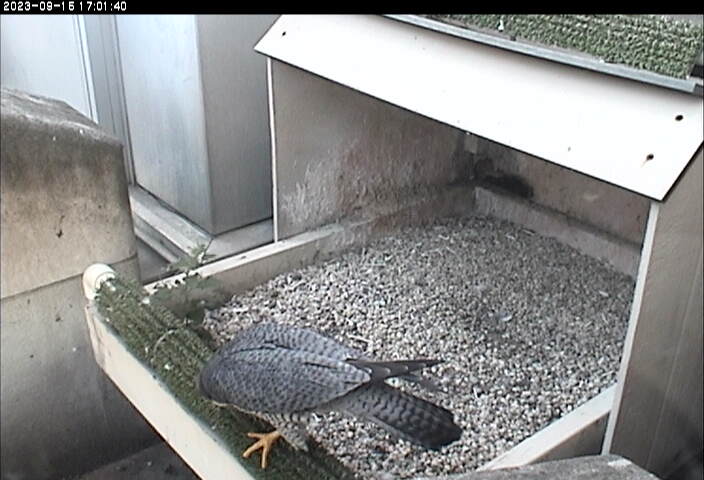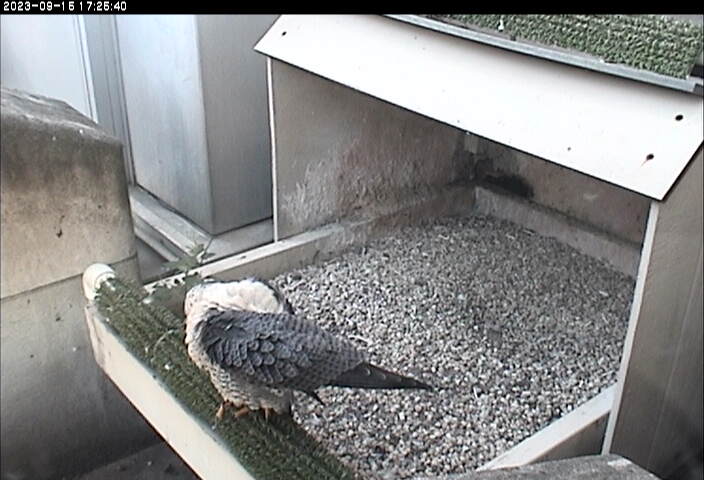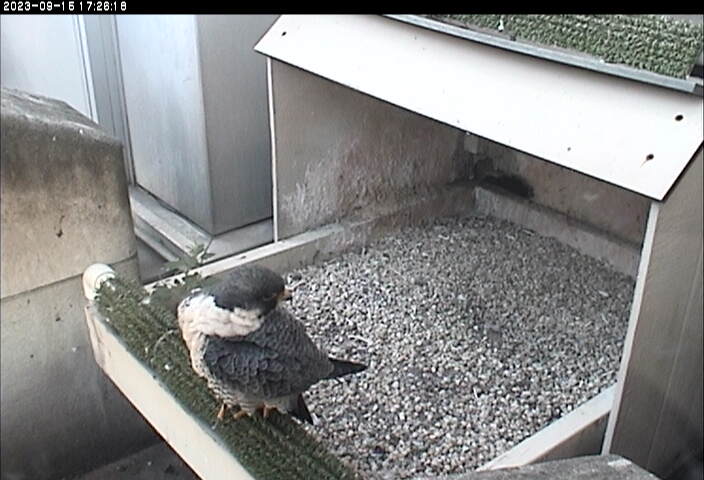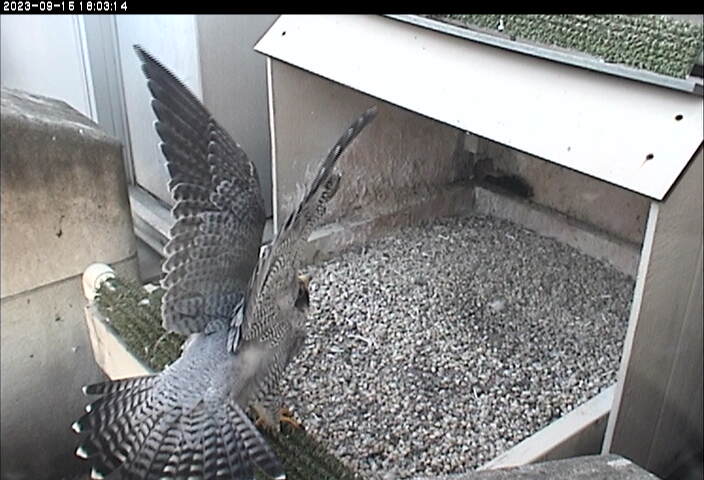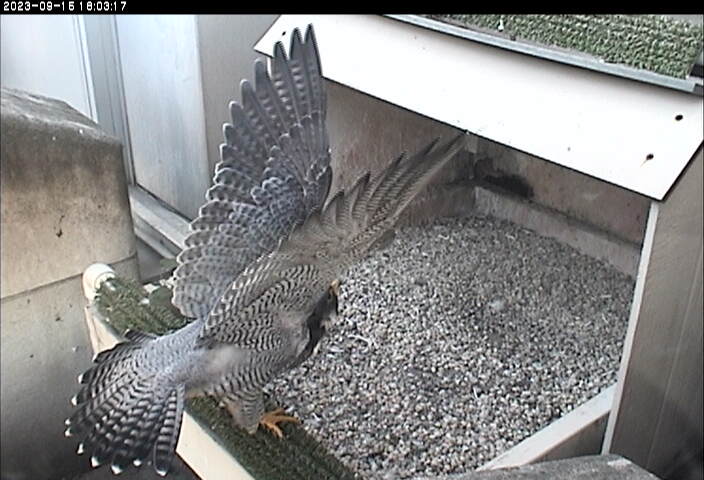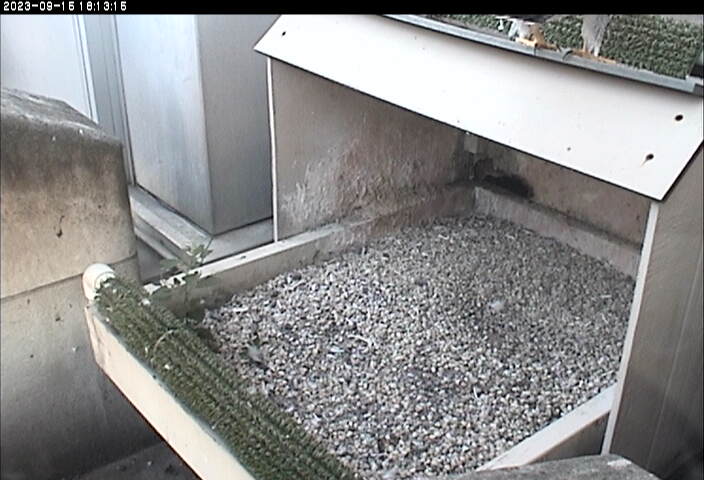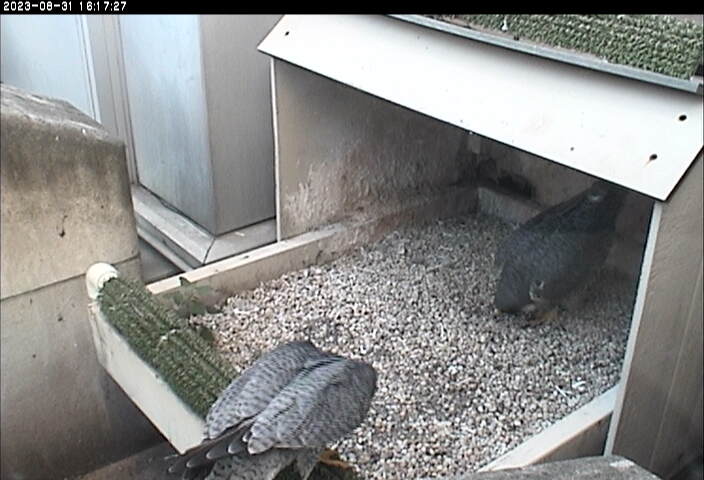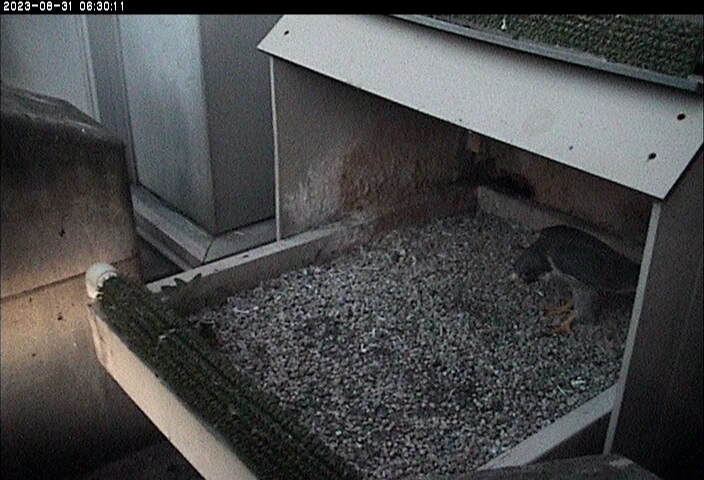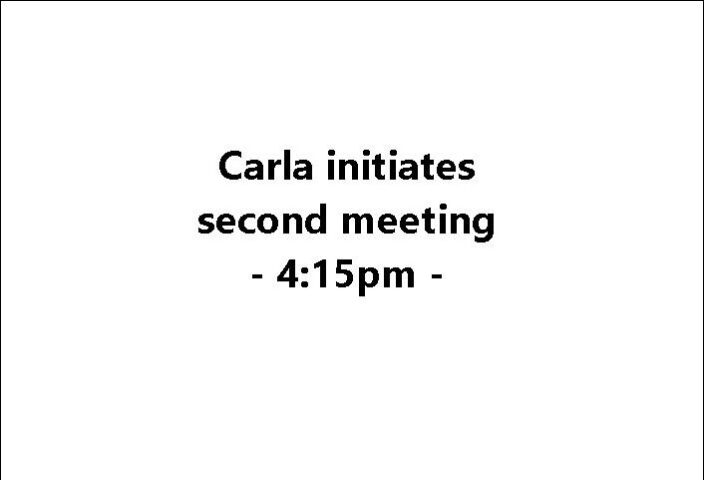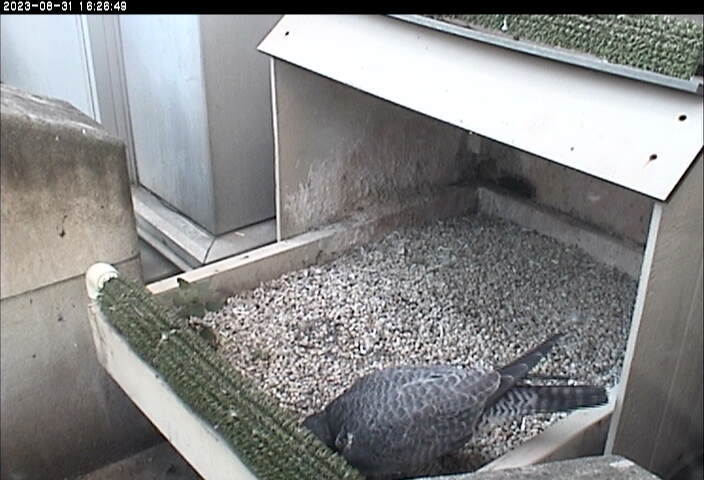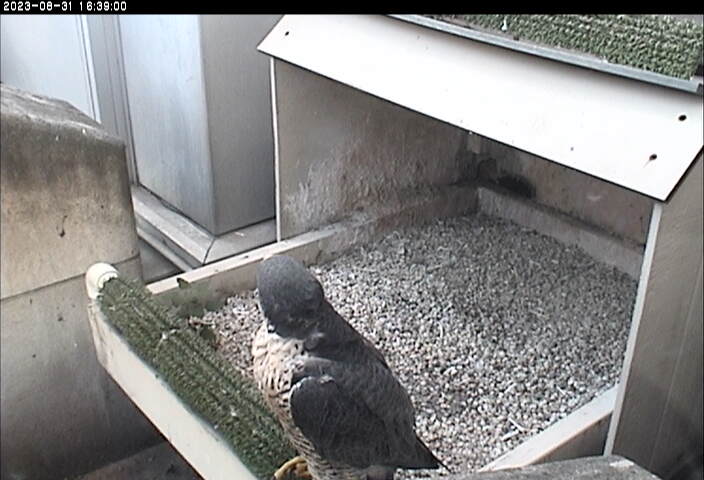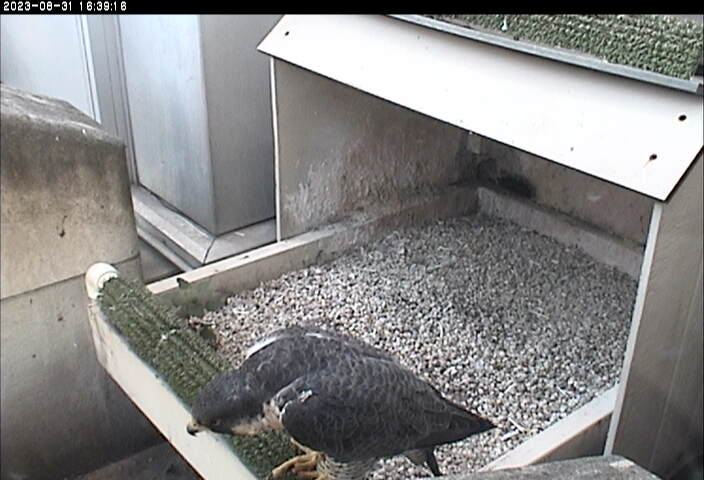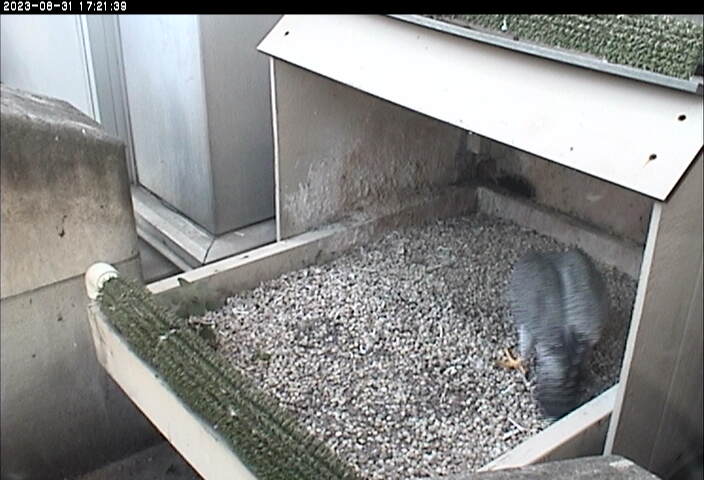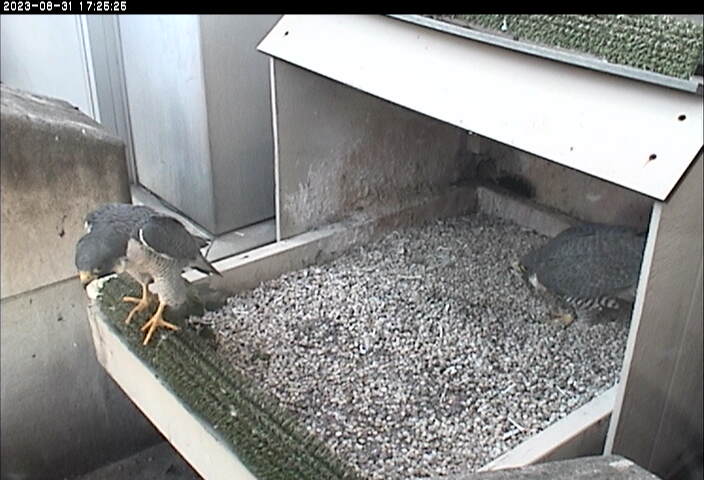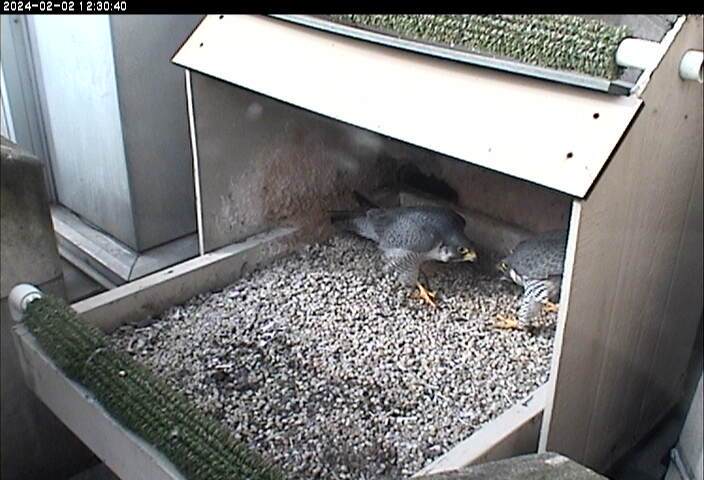
7 February 2024
Courtship season is underway at the Pitt peregrine nest where Ecco and his mate Carla are cementing their pair bond. Apparently they are not the only peregrines in the area.
On 26 January I received news from Charles Bier who was instrumental in establishing the peregrine nestboxes at Gulf Tower and Pitt. Charles saw a pair in East Liberty.
I happened to be in East Liberty on this past January 12th, and I happened to notice 2 peregrines flying into the top of the East Liberty Presbyterian Church. One of the birds landed high on the church tower and the other one did, or flew behind the tower at the same altitude. I do not know that this was a “pair”, but they were behaving within that context, and at this time of the year they would be focusing on high ledges.
So, I am wondering if a pair is known to be using this church, or if possibly it could have even been the Cathedral of Learning pair having a lunchtime outing to East Liberty. I quickly measured out the direct distance between the CoL and this church in East Liberty and it came out to about 1.9-miles. Back in the day, this distance would have been regarded as too close for comfort; re: 2 pairs in close proximity (that was an initial concern for the Gulf Tower and CoL pairs, which were about 2.3-miles apart). In any case, there are many factors involved and I doubt this distance would be a problem for them.
— email from Charles Bier, 26 January 2024
I replied that the Pitt peregrines generally stay close to home to defend their territory at this time of year, so maybe it’s a new pair.
Then, outside my window on Sunday 4 February, I saw a peregrine flying hard toward Shadyside from the direction of the Cathedral of Learning. This falcon was using territorial flappy flight to make itself obvious as it approached another peregrine of the same size — likely both females — circling up in the vicinity of Negley Avenue and Baum Boulevard. This intersection is about halfway between the Cathedral of Learning and East Liberty Presbyterian Church. It might be a boundary line.
The peregrines did not fight. Instead they both circled up apart from each other and went their separate ways.
This is the time of year when peregrines with a less than satisfactory nest site try to claim a better one. The Cathedral of Learning is the best site in town and Carla is new there(*) so of course the challengers are testing to see if she’s up to snuff.
Perhaps that explains why she was so distracted while Ecco was courting her on Saturday 3 February. Though the courtship session lasted 6 minutes, Carla spent 3 minutes looking at the sky. To save you time, I chopped out those (boring) three minutes with a fade.
Has the territorial boundary been settled? Are there challengers on the horizon?
Keep up with all the action on the National Aviary Falconcam at the University of Pittsburgh.
(*) Carla arrived at the Cathedral of Learning in late May last year. She was banded Black/Blue S/07 at her birthplace in Fort Wayne, Indiana in May 2020.
